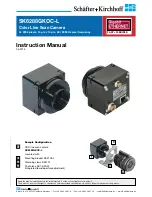
EN 38
Appendix C. Performance Information
1.
Video Performance Information
The video quality is dependent on the video parameter settings and the network quality. If you want to have a
better video quality, you will usually set higher resolution and higher frame rate. This is fine when you are
viewing the video locally in the same network. But when you want to see the video remotely through the
Internet, you need to know the Internet speed (bandwidth) connected to your home network. If the “Internet
speed” setting of your
IP Camera
is very large, but your real Internet speed (bandwidth) is relatively low, the
video quality could be very bad. In some worst case, the video display could be disconnected. In order to have
the best video quality, you better have broadband service from your ISP and set the “Internet speed” of the
IP
Camera
a little lower than the real Internet speed provided by your ISP.
Also need to notice that when multiple users are displaying the videos from the same
IP Camera
at the same
time, the video bandwidth times number of users will be needed for the Internet speed.
2.
WiFi Performance Information
The WiFi performance is dependent on the distance between the
IP Camera
and the AP (Access Point) / router
and dependent on the number of devices connected to the AP/router. Also need to consider that if there are
any barriers like wall or floor between the
IP Camera
and the AP/router. IF there are some open space between
the
IP Camera
and the AP/router, you also need to know that the performance will be interfered in rainy day.
The antenna gain and it’s direction in the AP/router will also affect the WiFi performance. In general case,
when the
IP Camera
is set to the default video setting (256k bps) and there are no other interferences between
the
IP Camera
and the AP/router, the working straight distance is about 100 meters between
IP Camera
and
the AP/router.









































